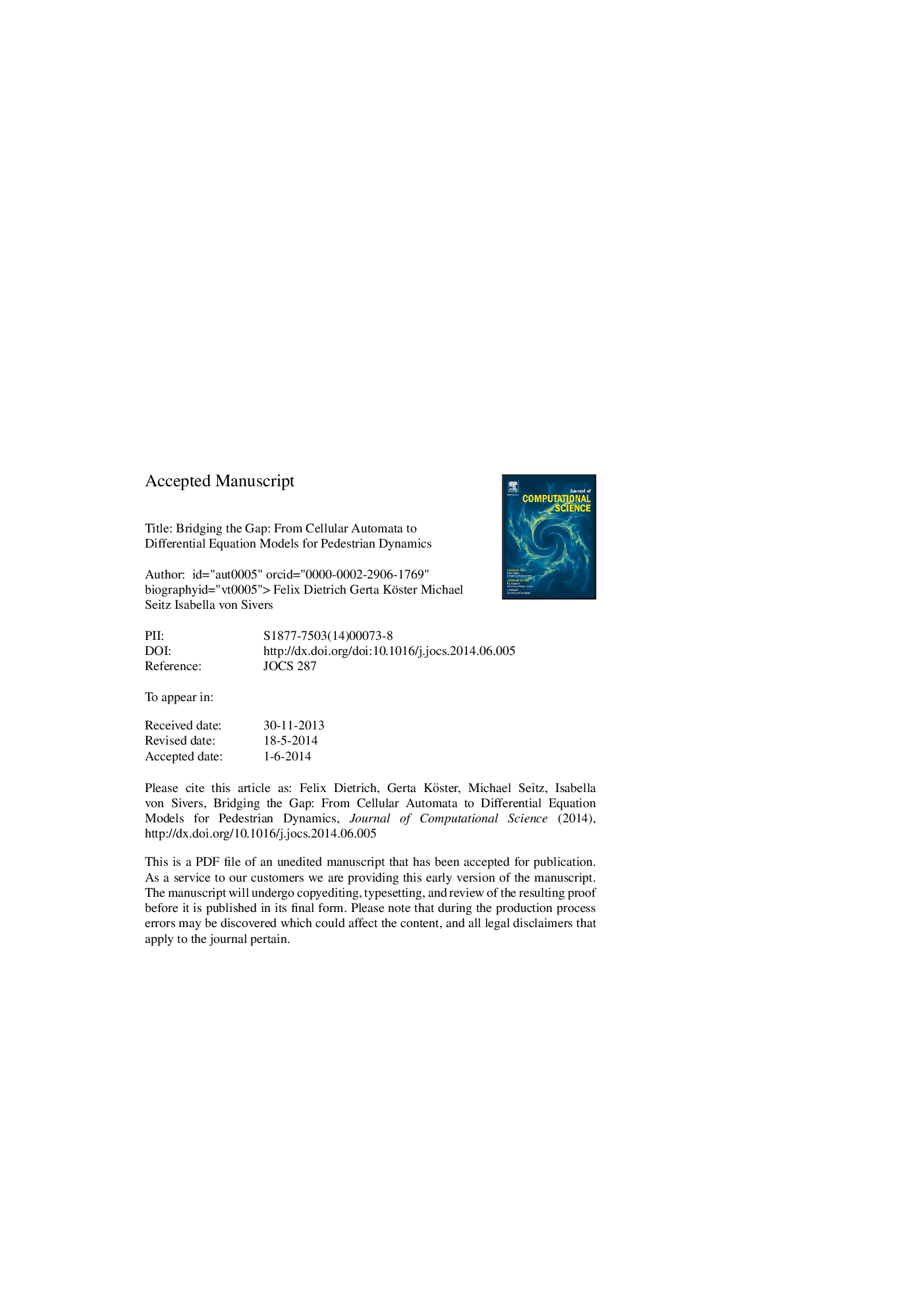| Article ID | Journal | Published Year | Pages | File Type |
|---|---|---|---|---|
| 10332833 | Journal of Computational Science | 2014 | 53 Pages |
Abstract
Cellular automata (CA) and ordinary differential equation (ODE) models compete for dominance in microscopic pedestrian dynamics. There are two major differences: movement in a CA is restricted to a grid and navigation is achieved by moving directly in the desired direction. Force based ODE models operate in continuous space and navigation is computed indirectly through the acceleration vector. We present the Optimal Steps Model and the Gradient Navigation Model, which produce trajectories similar to each other. Both are grid-free and free of oscillations, leading to the conclusion that the two major differences are also the two major weaknesses of the older models.
Related Topics
Physical Sciences and Engineering
Computer Science
Computational Theory and Mathematics
Authors
Felix Dietrich, Gerta Köster, Michael Seitz, Isabella von Sivers,
